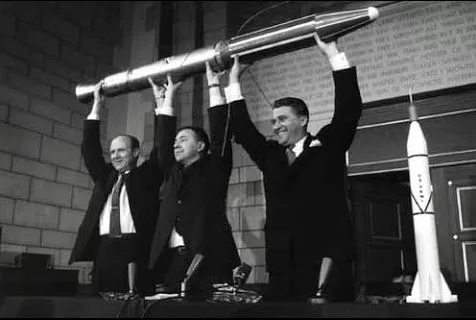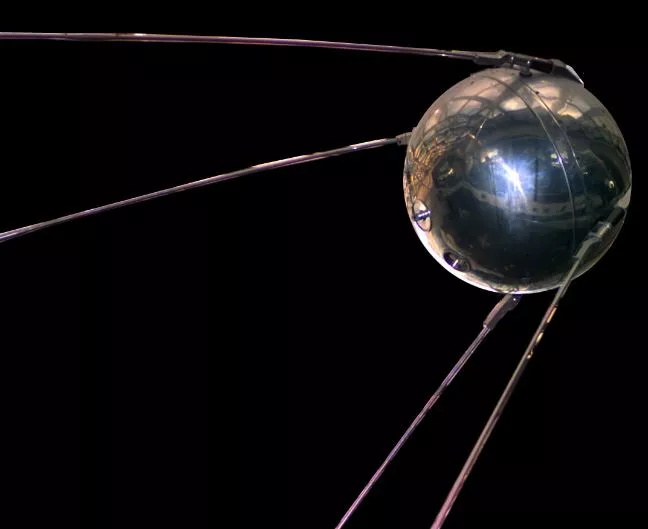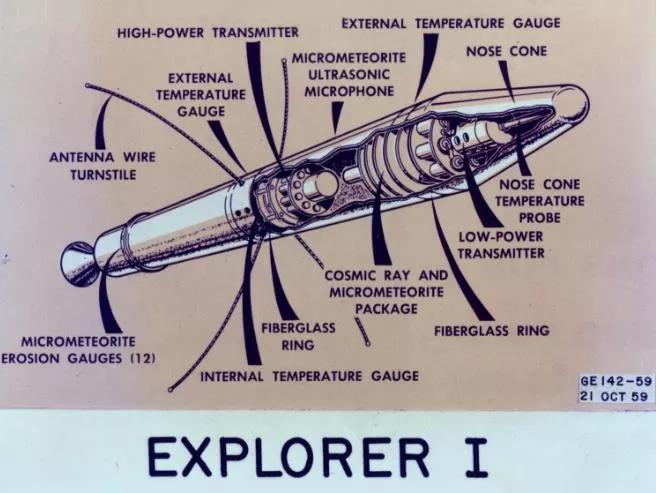The International Geophysical Year began as an idea proposed during a casual meeting of space scientists in 1950. The rest, as they say, is history.

Bill Pickering, head of Pasadena, California’s Jet Propulsion Laboratory which designed and built Explorer 1, James Van Allen, designer of the cosmic ray detector on board Explorer 1, and Wernher von Braun, whose team developed the Jupiter-C first stage (rocket) that launched Explorer 1. Credit: NASA
On July 1, 1957, scientists around the world began an intense year of research on satellites, Earth’s atmosphere, and related subjects known as the International Geophysical Year. The Soviets would launch Sputnik and the Americans would follow with Explorer 1, accelerating (if not beginning) the Space Race.

Sputnik 1. Credit: NASA
The idea for the International Geophysical Year all began in 1950 with a suggestion by Dr. Lloyd Berkner at a meeting at the home of physicist James Van Allen. Berkner was voicing what scientists around the world had wanted for years---to launch a satellite. Both the Soviet Union and the U.S. quickly rose to the challenge; however, the Soviet Union became the first nation to successfully launch a satellite with both Sputnik 1 and 2 in October and November of 1957.
Explorer 1, which launched in January 31, 1958, was the United States’ first successful satellite launch and provided the first data ever transmitted from Space. That data came from a cosmic ray detector on board the satellite invented by physicist James Van Allen. Van Allen’s detector revealed the existence of Earth’s radiation belts, now known as Van Allen radiation belts.

An artist's rendition of Explorer 1 and its components. Credit: NASA
Despite the element of competition, the International Geophysical Year created a foundation for the worldwide partnerships that we enjoy today. Our ability to protect lives and property rests on our joint commitment to satellites as one of our best observational platforms.
For more information, see our web article What Is a Satellite.
More on Explorer 1
Explorer 1, the first successfully launched U.S. spacecraft, traveled into space on an adapted Jupiter-C rocket January 31, 1958, and occurred during a time in space history known as the International Geophysical Year (IGY).
Explorer 1 carried instruments designed for the study of cosmic rays, micrometeorites, and for monitoring of the satellite's temperature. It was the first spacecraft to successfully detect the durably trapped radiation in the Earth's magnetosphere, dubbed the Van Allen Radiation Belt (named after the principal investigator of the cosmic ray experiment on Explorer 1, James A. Van Allen). Later satellite missions (in both the Explorer and Pioneer series) were to expand on the knowledge and extent of these zones of radiation, and were the foundation of modern magnetospheric studies.
To learn more about Explorer 1, visit NASA's Space Science Data Coordinated Archive.
